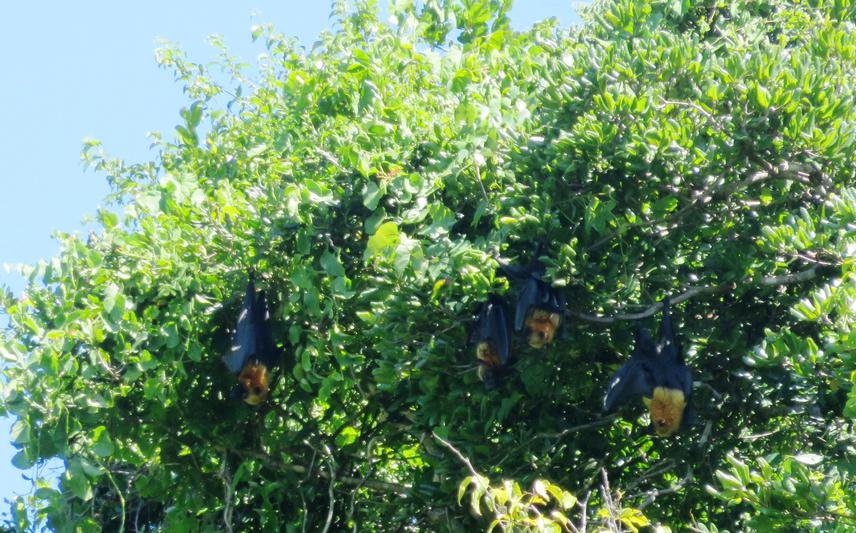Hortensia Rasoanandrasana
Other projects
30 Jan 2013
Enhancing Community-Managed Conservation and Ecotourism in Bobaomby Area, the North Tip of Madagascar I
18 Jan 2016
Enhancing Community-Managed Conservation and Ecotourism Project in Bobaomby Area, the Northern Tip of Madagascar III
The aim of this project is to help the communities of Anjiabe and Ampombofofo to have sufficient alternative source of income and simultaneously protect their environment.

Madagascar Flying fox ( Pterofus rufus) © Erika Rakotomalala Belotto
This project will involve 200 villagers in two main villages (Ampombofofo and Anjiabe) and smaller villages (Maroaomby, Madiro ladafy, Antanamanakana) in Bobaomby, Madagascar. The project will reach 54 households within the time of fieldwork. The project will begin with conservation approaches including efforts to raise environmental education and awareness in primary schools. This will involve not only students but teachers and parents, therefore the whole of local communities.
In order to pick ecotourism sites within Ampombofofo and Anjiabe villages, biological research will be done for certain groups of fauna and flora known as indicator groups for the level of biodiversity richness and potential for tourism in the area. Different methods will be used such as opportunistic and point counts, night walks and active searches, transects and casual observation. These villages are known as habitat of Crowned Lemurs (Eulemur coronatus) and Sanford Brown Lemur (Eulemur Sanfordi), and Madagascar Kingfisher. These Lemur species are endemic in the north part of Madagascar. There are also several IUCN red list species including: Mantella Viridis frog, Leaf tailed gecko, the biggest chameleon (Furcifer oustaliti), and a threatened butterfly (Pharmacofagus). Habitat degradation and species threats are frequent in this region due to resources extraction from land being cleared for cultivation, disturbance by zebu grazing, and especially from cutting down trees for artisanal charcoal manufacturing.
Thus, the major threats to these endangered species and habitats are due to villagers’ poverty and need for survival. In this project, villagers will be trained to develop alternative sources of income such as selling cassava, corn, hot sauce and handicrafts, and guiding visitors. The project aim is then to help the community to have a suitable source of income and at the same time protect their natural biodiversity through grass roots conservation and ecotourism project.
A workshop will focus on tour planning and budgeting, first aid, catering services, financial management, tour guides, and communication and language skills. Basic tourism local infrastructures such as accommodation facilities (camp sites in minimum), signboards at the entry points and picnic sites have to be developed. The workshop participants of the village will include the chief of the villages, the elders of the villages, project resources person in the village, trained guides, government representatives, doctor of the village, teachers of primary school.